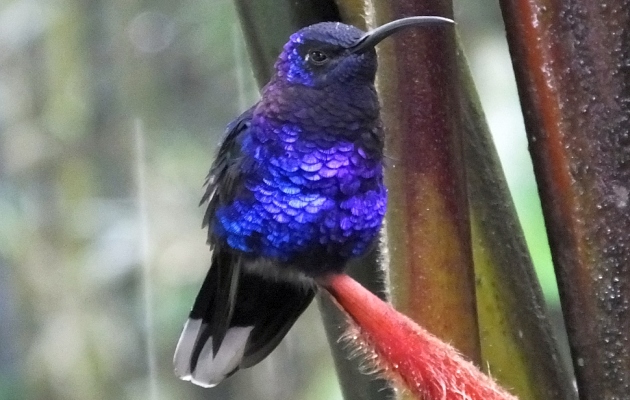
Birding can be a real challenge. For some, it can involve hiking into a furnace of a canyon to look for a small yellowish bird much easier to see in other countries. Birding can be spending the night on a boat in the Atlantic so you can wake up to White-faced Storm-Petrels and other pelagic treats. It can involve everything from braving freezing cold temperatures to picking off leeches in India, gazing into the dark corners of humid rainforest, and requisite self experimentation with low oxygen levels in the lofty levels of the Andes.
Birding is adventurous indeed but it doesn’t have to be, not even in far off, incredibly birdy Costa Rica. While birding in Costa Rica can be as adventurous as a birder wants, most take a much easier route and why not? Easy birding in Costa Rica is still fun birding in Costa Rica! One of the best spots to chill with the binos is the site commonly known as Cinchona (in eBird lingo, the Galeria de Colibrí y Soda Cinchona – Mirador San Fernando).
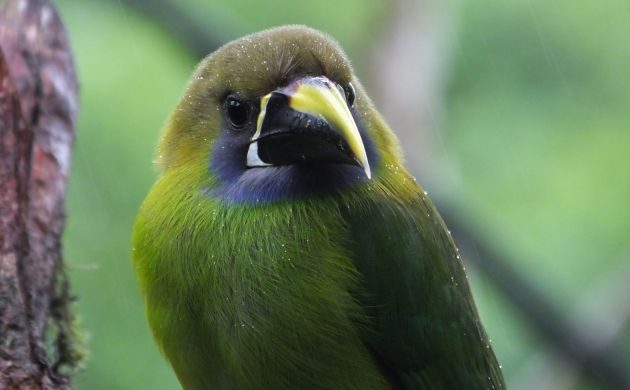
Located about 10 minutes drive on the main road down hill from the La Paz Waterfall Gardens, this classic birding site is a wonderful place to practice the art of easy birding. Not sure how to go about doing that? Check out this brief yet informative guide:
Easy to Visit with a Rental Vehicle
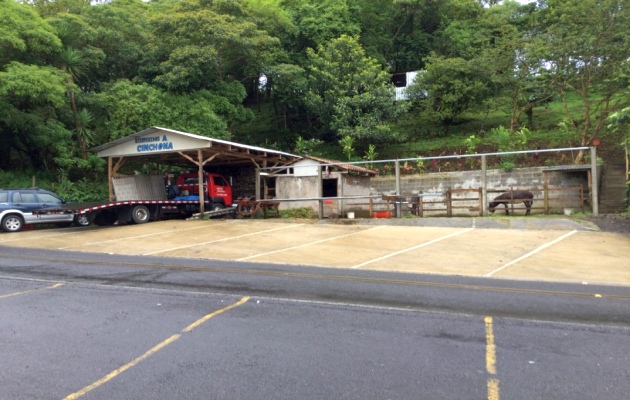
Drive there on your own, take a guided day trip, or enjoy the stop on a birding tour. This site is situated on a good, well traveled road and has parking for several vehicles. Back into a parking spot so your car can face the road. Trust me, if you do that, it will be much easier to head back out on the road! When parking, watch out for one or two local dogs that sleep in the parking lot.
Weekdays are Best
The best time to visit Cinchona is between Monday and Friday. If you have to visit on a weekend, go anyways but expect to share the space with a bunch of day trippers. From January to April, the place can also get busy with fellow bird enthusiasts and photographers but it’s not too bad, most of the birds don’t seem to mind. As with most birding endeavors, mornings and later afternoons are best but the birding can still be great any time of day.
Take a Seat and Order a Coffee
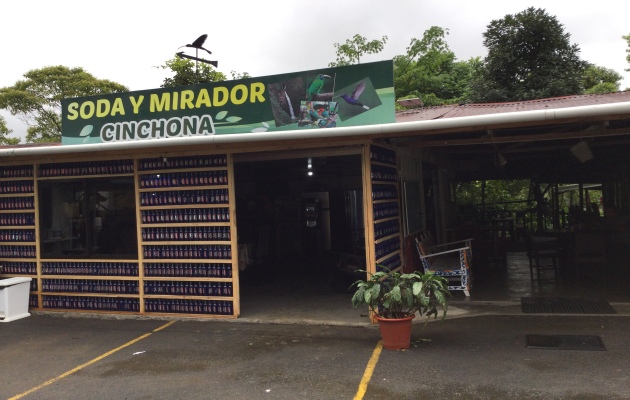
Upon arrival, just walk back to the feeder area and take a seat. There might be some lifer overload but don’t fret, just sit back, relax and enjoy those big and purple Violet Sabrewings. At some point, a server will ask if you want something. They may or may not give you a menu. Say, “menu” and that will eventually happen. In the meantime, order a “cafe negro”, a “cafe con leche”, “expresso”, or “mochachinno” and let yourself go with the avian flow. Enjoy the coffee, enjoy point blank looks at tropical birds.
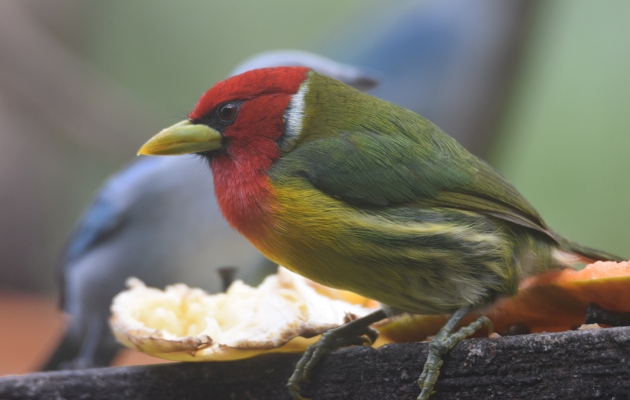
Keep Watching the Feeders
Obvious advice but honestly, since various birds can come and go, keep an eye on all of the feeders and keep checking everything. Take it all in, marvel over the yellows of Silver-throated Tanagers and the weird beauty of Red-headed Barbets but keep watching for anything new, anything different. That goes for the hummingbirds too. The birds will be close and you might get prolonged constant views of Prong-billed Barbet. This is what we want of course, this is what easy birding in Costa Rica is all about.
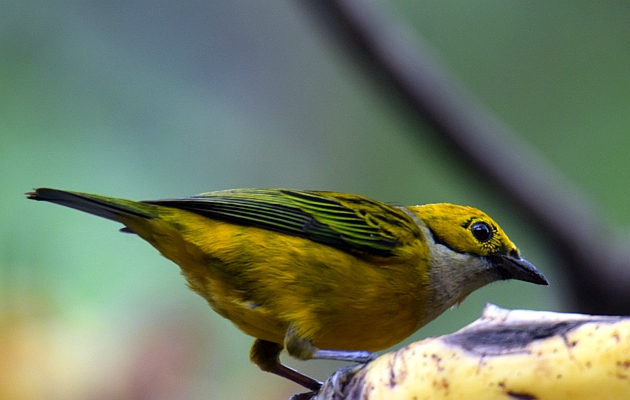
Keep an Eye on the Sky for Raptors
Cinchona and other sites on the same road can also be good for raptors. Watch the skies and scan the forested canyon for White Hawk, Barred Hawk, Short-tailed Hawk, Gray Hawk, Swallow-tailed Kite, and Bat Falcon perched on snags. Make sure to scan the vultures and check every raptor in flight. That odd bird high overhead could end up being an Ornate Hawk-Eagle. That stocky dark raptor might be a rare Great Black-Hawk. Fruiting trees can have Scarlet-thighed Dacnis, other tanagers, and lots more.
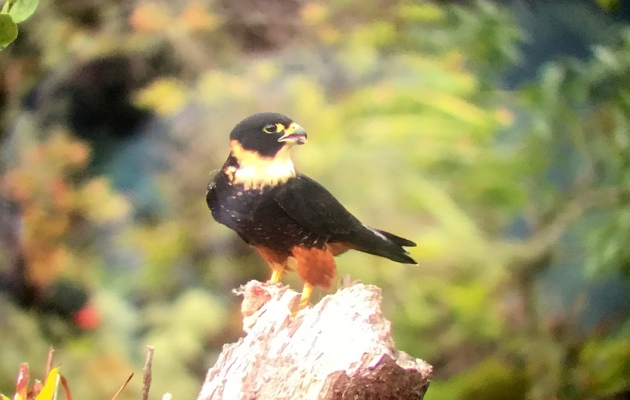
Easily accessible, friendly, birdy, and serving good food, Cinchona is one of the best of the easy birding sites in Costa Rica. Make sure to visit and leave a good donation, I just might see you there.


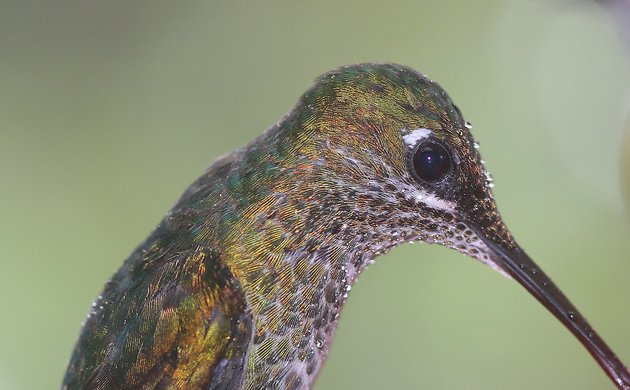
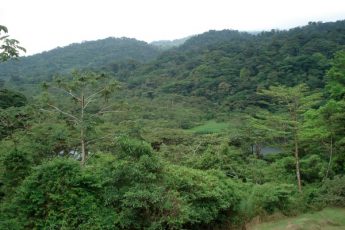

 New writers welcome – please contact us for details.
New writers welcome – please contact us for details.

















Sounds absolutely wonderful. Maybe someday… Thank you.